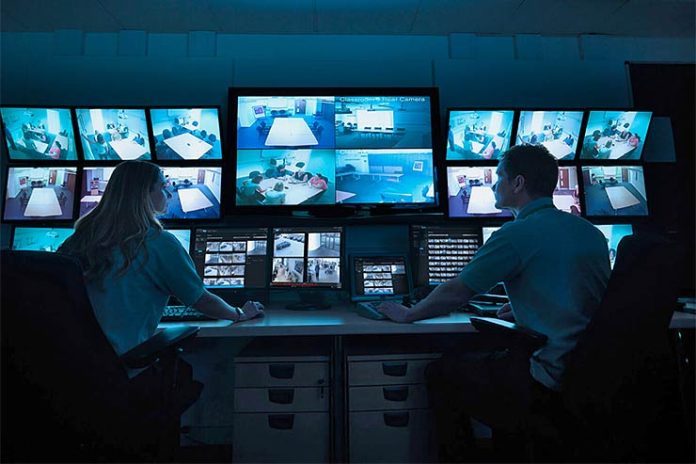Technological innovation has expanded the remit of what video technology can be used for and with the increased bandwidth that 5G gives connected devices, more and more interlinked devices can be added to the internet, known as the Internet of Things (IoT).
While ensuring proper surveillance and security has always been the topmost logical point of video technology applications, it has been useful in a wide range of other operations as well. and, after the pandemic storm, the logical application for video technology has only been increasing.
To talk more about this, ELE Times Sub Editor and Technology Correspondent Mayank Vashisht had a conversation with Sandesh Kaup, Country Manager, of Milestone Systems, India and SAARC.
Excerpts:

ELE Times: The whole world is experiencing a paradigm shift in almost every aspect because of the uninvited and unprecedented knockout punch of the COVID outbreak. Where do you see video technology playing a key role in bringing the new normal?
Video security has witnessed a rise in adoption, fuelled by the demand owing to the gradual unlocking of economic activities. According to 6Wresearch, the video surveillance market in India is projected to grow at a CAGR of 16.6% by 2026.
We see a growing importance of video technologies across sectors like hospitality, smart cities, healthcare, and education with social distancing becoming the norm rather than a government-mandated rule. Video has helped in social distancing, mask compliance and touchless attendance. Add We see a growing importance of video technologies across sectors like hospitality, smart cities, healthcare, and education with social distancing becoming the norm rather than a government-mandated rule. These solutions help in social distancing, mask compliance and touchless attendance.
Even as people are getting vaccinated and some measures are relaxed, safe distancing measures may become a part of life and this is where the power of a robust video management software solution integrated with high-end technologies like AI, IoT and thermal sensors will enable us to be prepared for the transition towards Covid-19 resilience.
As we learn to live with Covid-19, Milestone’s open video management system (VMS) allows easy integration with new technologies namely thermal imaging cameras, fall and sound detection analytics and so on, allowing frontline workers in the healthcare sector to respond immediately when alerted.
ELE Times: How AI, IoT, analytics and other cutting-edge technologies are going to be integrated with video to give better choice to the authorities in terms of evidence and for monitoring social distancing during the pandemic?
Video technology has moved beyond the realm of just being confined to the security industry to add value across enterprises and public sectors. By using Artificial intelligence (AI) and analytics to augment CCTVs, crowd detection and people counting technologies can help maintain safe social distancing requirements. By leveraging new technologies, organizations can set specific parameters in their VMS that can trigger alarms.
Live and recorded video can be analysed in greater volumes, with less human intervention to derive behaviour analysis and proactive insights. Passive cameras are now becoming active assets, adding value to crime prevention and workspace management. Airports can deploy thermal cameras to scan people who are running a temperature while ensuring mask compliance, which then alert the authorities on-site through their audio systems. Additionally, videos integrated with biotelemetry can be monitored by paramedics to reduce response time in case of emergencies.
With the pandemic creating a disruption in the way people behave in open spaces, cameras operating on an advanced VMS can pick up people’s movement to track entries or exits via alerts.
At Milestone Systems, we work with ecosystem community partners who help develop technologies like theft or loss prevention, increasing staff safety, efficient daily operations, better RoI, lower costs, higher scalability, thereby providing the much-needed support required during an emergency. We have partnered with companies that build the analytics on Milestone Systems’ platform, thereby giving a combined solution to our customers.
Most organisations deal with huge data and many hours of video footage but struggle to draw meaningful insights and learn from their recordings. With the upcoming release of Milestone’s XProtect Rapid REVIEW, Milestone customers can now get these insights directly. Customers can also locate specific video recordings they need and review hours of footage in minutes.
ELE Times: How are the new trends in video technology giving a better user experience?
Video has become important to users and with the recent advances in internet technology and infrastructure, users now expect a seamless experience from installation to the viewing of footage. The VMS industry, too, is guided by the responsibilities to invent, innovate, and leverage technology progress to enable the world to thrive in the new next.
- Rise of 5G and IoT: 5G will be the fuel in the IoT era with high bandwidth connections that will increase the number of organizations using high-quality, real-time video and advanced video analytics. It will enable our homes, businesses, and cities to work better, as camera and sensor data tell us what’s happening in real-time and how to do better. Cameras and video will be at the epicentre in the IoT age, and they will rely on a fast, consistent connection in order to relay their information back to decision-makers. According to research conducted by *IDC and Milestone Systems1, 84 percent of businesses in UAE and Europe plan to deploy advanced video technologies within the next two years
- Video tech moving to the core of IT: Video management systems will become more evolved, from a security system that manages different cameras on-site to a value-driving solution that connects the IoT with AI and machine learning. For example, building management could assess facilities’ use over time based on video and sensor data to understand how to plan their next office or where efficiencies could be made
- The integration of AI and video analytics has significantly changed the transportation industry and continues to create amazing opportunities. Video technology combined with IoT and 5G helps gather critical data and insights to provide smart insights for better traffic management, reducing waterlogging and managing crowds during festivals. Through the integration of video, sensors, and smart technologies better security and traffic management in the country is becoming a reality.
- Another key focus is digital ethics. This focuses on ensuring ethical, transparent, and accountable use of AI technologies, in a manner consistent with user expectations, organisational values and societal laws and norms. Responsible AI can guard against the use of biased data or algorithms, ensure that automated decisions are justified and explainable. At Milestone systems, we want to help spearhead the agenda for not only a secure but responsible video technology use. In 2017, we joined more than 150 representatives from technology companies around the world to author and sign the Copenhagen Letter. The letter is a declaration that calls on tech companies of all types to put people first—rather than business and profits—when designing and using technology.
ELE Times: How is video technology helping government authorities in monitoring and managing cities in times of pandemic?
Video technology will play a key role in the Government of India’s Smart City mission and can be valuable to state governments who are looking at controlling and mitigating the detrimental effects of this pandemic. Going forward, building a video network platform with an open-source architecture can pay huge dividends in a country with 1.3 billion people.
In the capital city of Bulgaria, Sofia, for example, the authorities made it a point to upgrade their video network by integrating it with a video management software platform that had an open architecture, which allowed them to integrate sensors from different manufacturers. This drastically cut down the incident response time and provided post-event investigations, crucial during a pandemic as well as in a security situation.
Video solutions and the right video technology will help ensure that strict measures are implemented. Analytics tools can identify the proper distancing amongst people and ensure that citizens abide by compulsory mask-wearing regulations. Heat-mapping cameras can sense a change in temperature indicating COVID affected zones or hotspots in crowded transit areas and highlight locations of large gatherings.
ELE Times: Can video technology be a key element for industry 4.0?
From being used merely as a security tool, manufacturers are turning to video technologies with IP cameras and enhanced storage and analytical capabilities to optimise their business operations. These integrations provide cameras with cutting edge technologies such as night vision, infrared heat detection, and 360-degree view. They are capable of monitoring activities otherwise invisible to the naked eye. The addition of video analytics allows this equipment to automatically analyse, detect and trigger alerts in real-time instigating immediate action.
Analytical capabilities such as motion detection, line or boundary-crossing detection, facial recognition, object, or people counting, can be integrated with an open VMS to make business functions smarter and more efficient.
This industrial revolution has driven the shift in adopting a more interconnected, manufacturing industry which is now reliant on interconnected devices to gather insights from a range of processes via IoT which has, in turn, allowed them to improve efficiency and increase the uptime of production lines. The data generated by IoT sensors can also be combined with video technology systems to successfully digitize all their operational processes.
Another instance of innovation aiding the industrial revolution is the growing use of facial recognition in payment services. This is considered to be less intrusive than making payments using a mobile device, given that with the latter your geolocation is constantly tracked, thanks to GPS.
For example, heavy manufacturing equipment fitted with cameras, are deployed in areas where it’s unsafe for humans to venture due to excessive heat or darkness. This in turn protects lives by making manufacturing processes in critical infrastructures like chemical plants safer for workers.
Mayank Vashisht | Sub Editor | ELE Times








